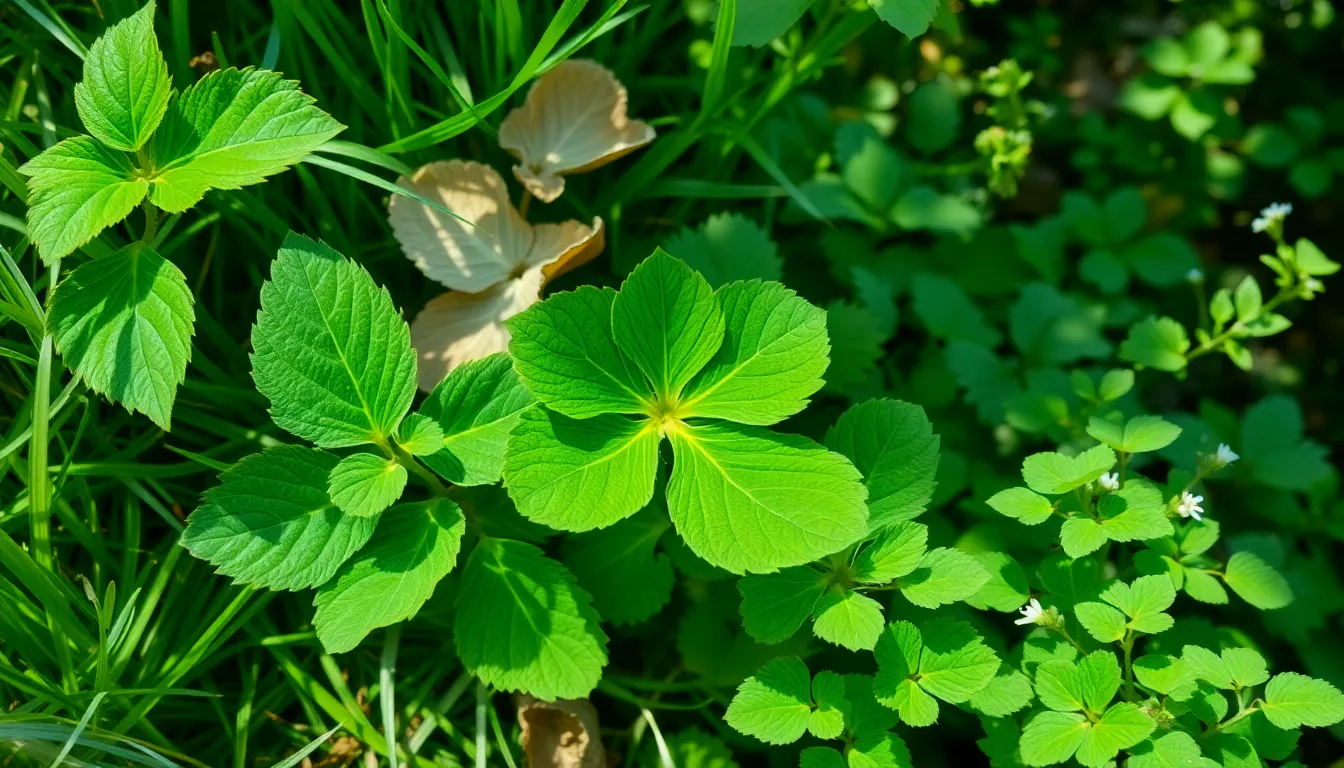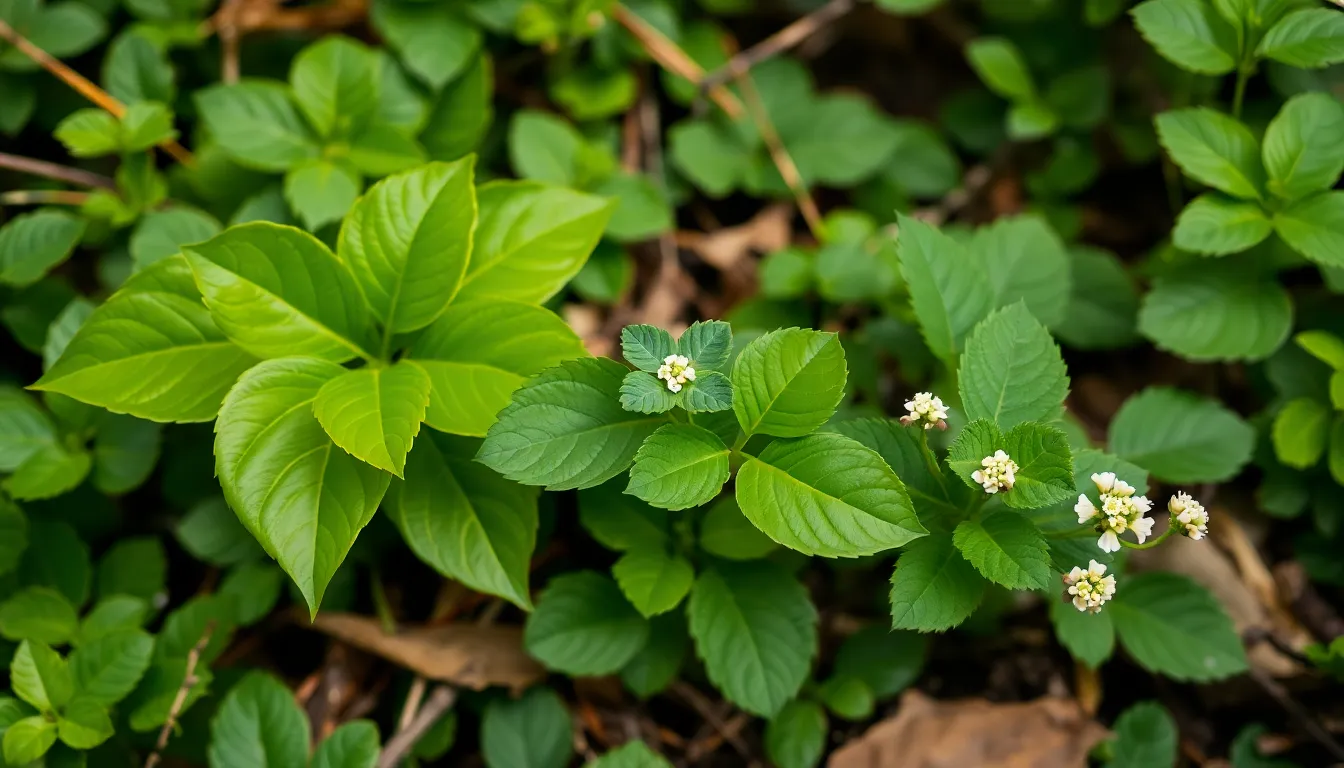Phone:
(701)814-6992
Physical address:
6296 Donnelly Plaza
Ratkeville, Bahamas.

Spotting a three-leaf plant can feel like a game of botanical hide-and-seek. With so many leafy contenders vying for attention, how’s anyone supposed to know which one’s which? Fear not, plant enthusiasts! Whether you’re a seasoned gardener or just someone who can’t tell a fern from a fig, this guide’s got you covered.
From the infamous poison ivy to the charming clover, identifying these three-leaf wonders can be both fun and rewarding. Not only will you impress your friends with your newfound knowledge, but you’ll also avoid any itchy encounters. So grab your magnifying glass and let’s dive into the leafy world of three-leaf plant identification. Who knew learning about plants could be this entertaining?
Three-leaf plants encompass a range of species, each presenting distinct characteristics. Poison ivy, known for its irritating effects, features leaves that can appear glossy, serrated, or smooth. Clover, a different example, often exhibits rounded leaf shapes with prominent markings. Understanding the appearance of these plants aids in effective identification.
Identification extends beyond appearance. Certain species thrive in specific environments; for instance, poison ivy frequently grows in wooded areas, while clover commonly appears in meadows or lawns. Recognizing the habitats where these plants flourish enhances identification skills.
Leaves display various colors and textures, contributing to in-depth identification. For example, poison ivy leaves alter from green in summer to shades of red in fall. In contrast, clover typically showcases vibrant green hues year-round. Noting seasonal changes aids identification.
Some three-leaf plants serve essential ecological roles. Clover functions as a nitrogen-fixing plant, enriching soil quality. Poison ivy, despite its reputation, offers critical habitat and food sources for wildlife. Appreciating these roles adds depth to identification efforts.
Visual aids support effective plant identification. Field guides or mobile apps often provide detailed photographs, assigning specific attributes to respective species. Learning from these resources fosters confidence in recognizing diverse three-leaf plants.
Enhanced plant identification skills lead to safer outdoor experiences. Avoiding rash-inducing plants like poison ivy significantly contributes to enjoyment during nature explorations. Engaging with the natural environment through plant identification encourages an enriched appreciation for biodiversity.

Three-leaf plants come in various forms, each with unique features. Identifying these plants makes outdoor activities safer and more enjoyable.
Poison ivy is a well-known three-leaf plant often feared due to its ability to cause skin irritation. Its leaves vary in appearance, showing glossy or matte textures and can be serrated or smooth. Poison ivy thrives in wooded areas, along trails and riverbanks. Springtime brings bright green leaves, while fall colors shift to vibrant reds and oranges. Understanding this plant’s growth habit helps in accurate identification, promoting safer experiences in nature.
Clover, commonly found in meadows and lawns, features small, rounded leaves that often display distinctive markings. The leaves can be green or variegated, providing a beautiful addition to landscapes. This plant is beneficial to soil health, enriching it with nitrogen and attracting pollinators like bees. Clovers bloom in spring and summer, showcasing clusters of white or purple flowers. Its ability to thrive in diverse environments makes clover a familiar presence in many regions.
Sweet woodruff is another three-leaf plant recognized for its aromatic foliage. The leaves are whorled and can appear somewhat lily-like, distinguishable by their pointed tips. Typically found in shady, moist woodlands, this plant flourishes in cool conditions. During late spring, sweet woodruff produces small, white flowers that add charm to its lush green background. The plant releases a sweet scent when crushed, enhancing its identification in natural settings.
Identifying three-leaf plants involves evaluating visual characteristics and understanding environmental considerations. By focusing on these elements, one can accurately differentiate between various species.
Three-leaf plants exhibit distinct visual traits that aid in identification. Poison ivy presents leaves that may vary in texture; they can be glossy or matte, and edges can be smooth or serrated. Clover leaves, on the other hand, often appear rounded with clear markings or patterns. Sweet woodruff has lush green leaves that can emit a sweet aroma when crushed. Observing the size and shape of the leaves, as well as the arrangement on the stem, serves as a helpful approach. Noticing seasonal changes in leaf appearance, like vibrant colors in fall, can also assist in accurate identification.
Environmental factors play a crucial role in identifying three-leaf plants. Poison ivy thrives in wooded areas, often near trails or water sources, indicating its preference for moist, shady environments. Clover typically grows in meadows, gardens, or lawns, flourishing in sunny, open spaces. Sweet woodruff favors shady woodland areas, often found among other ground-cover plants. Understanding these habitat preferences makes it easier to locate and recognize these plants in nature. Different seasons also impact plant visibility and health, offering clues to their identity based on growth cycles.
Three-leaf plants serve numerous purposes in both ecological and human contexts. Poison ivy, despite its notorious reputation, plays a vital role in ecosystems by providing food and shelter for various wildlife. Birds and other creatures depend on its berries for sustenance, ensuring its place in the food chain.
Clover offers unique benefits, often used as a cover crop due to its ability to fix nitrogen in the soil. Farmers and gardeners appreciate clover for improving soil fertility, which enhances crop yield. Its blossoms attract pollinators, contributing positively to local biodiversity.
Medicinal uses exist for some three-leaf plants as well. Certain species of clover have been researched for their potential health benefits, including anti-inflammatory properties. This interest in natural remedies often draws people to include these plants in their gardens.
Sweet woodruff, another three-leaf plant, is not commonly known but has a historical use in herbal medicine. Traditional practices highlight its effectiveness for various ailments, including digestive issues. Gardeners value its aromatic leaves, which can also serve as natural air fresheners.
Three-leaf plants often find their place in landscaping and ornamental gardens. Their diverse appearances can create visual variety among other flora. Many enthusiasts cultivate them not only for their beauty but also for their functional benefits in gardens.
Understanding the uses of three-leaf plants fosters appreciation and respect for their role in nature. As individuals learn to recognize these plants, they can better utilize them in gardening, ecology, and health.
Identifying three-leaf plants can be an enjoyable and rewarding endeavor. By understanding the unique characteristics and habitats of plants like poison ivy, clover, and sweet woodruff, individuals can enhance their outdoor experiences. This knowledge not only promotes safer interactions with nature but also fosters a deeper appreciation for the biodiversity surrounding us.
Utilizing resources such as field guides and mobile apps can aid in honing identification skills. As readers engage with these plants, they’ll discover their ecological significance and potential benefits in gardening and health. Embracing the challenge of plant identification opens up a world of exploration and learning, enriching one’s connection to the natural environment.